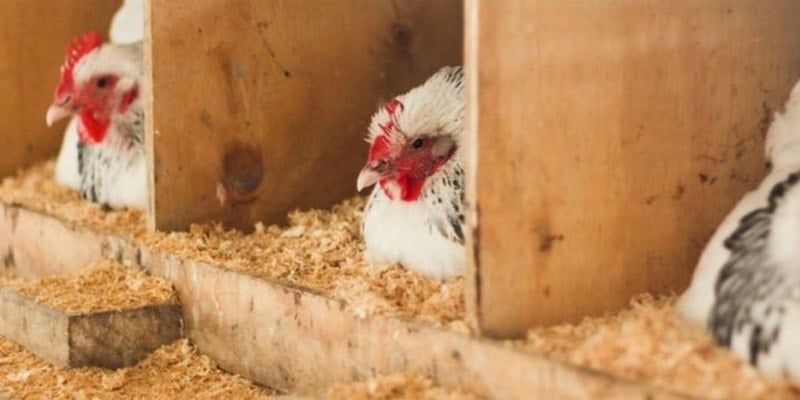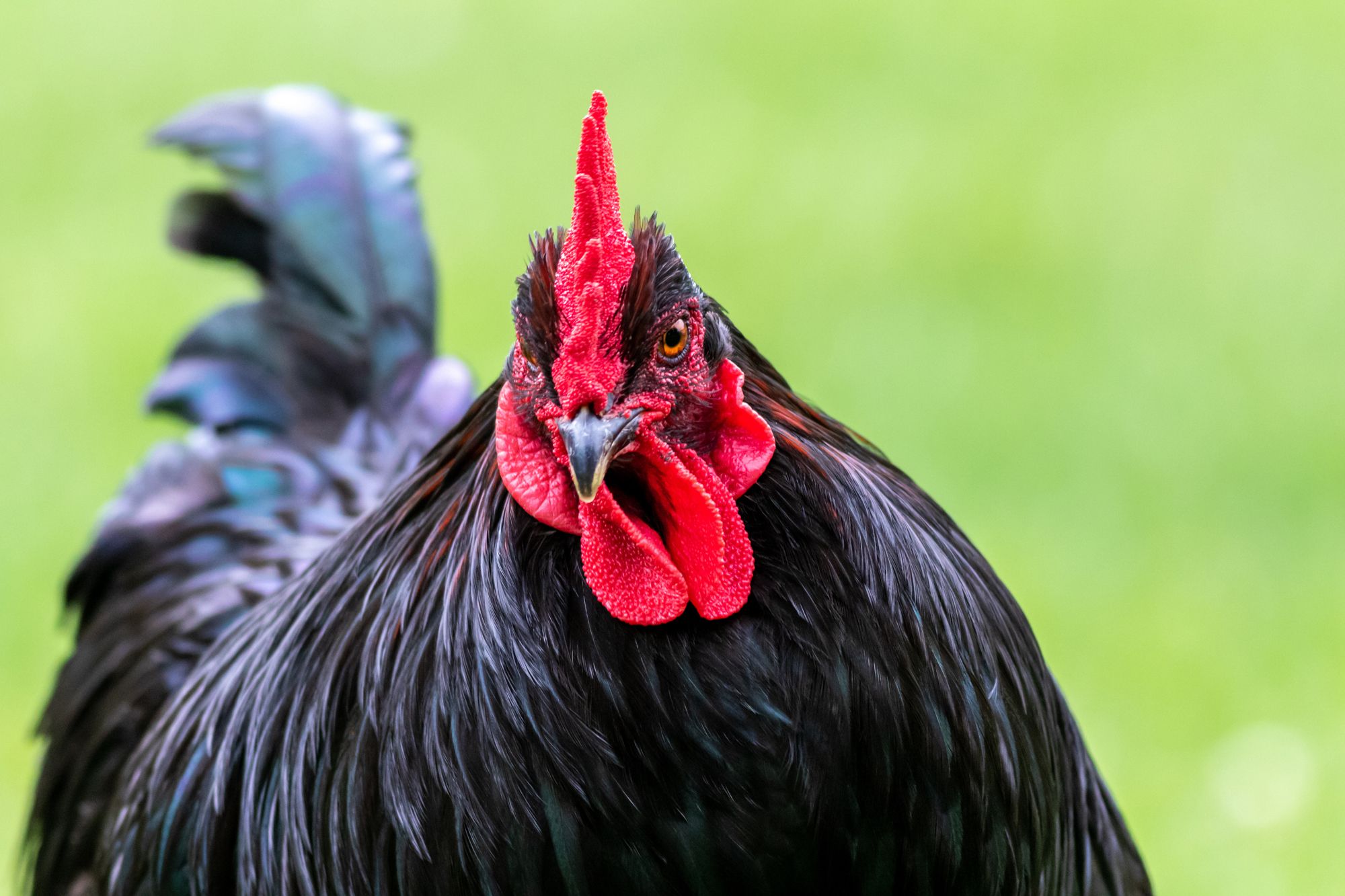The Cozy Coop


A few resourceful ways to keep your flock warm without heaters
Cozy may be a relative term in the dead of winter, but as keepers of the flock, we have a responsibility to provide cold-weather housing for our birds that is sheltered and secure. By our human standards, the wintertime coop may be a glacial icebox, but there are steps you can take to make the birds’ living quarters a manageable environment, even when facing the season's coldest temperatures.
Before we get into housing though, let’s take a look at the chickens themselves. Birds—and mammals for that matter—are homeothermic, meaning that they produce and dissipate heat to maintain body temperature. In chickens, there is a normal range that will vary between 105°F and 107°F, depending on the bird’s age, breed size, and gender.
Ideally, the birds’ environment will be such that they can maintain their thermal comfort zone without having to actively regulate body temperature. As it turns out, chickens are better able to adapt to cold conditions than to heat. There is roughly a 30°F body temperature flexibility at the lower end of the range, while only a 10°F limit at the upper end. So, heat stress is more likely to be fatal than cold stress.
Basically, chickens will naturally adapt to colder weather over a period of time and will regulate their body temperature by eating more, regulating blood flow to the extremities, ruffling feathers, and gathering in clusters to conserve warmth. But by paying a bit of attention to certain housing conditions that are often overlooked, you can keep your birds healthy, and in the long run, more content.
Two inconvenient truths
There are two conditions likely to do the most harm in the winter coop: drafts and moisture buildup. Drafts are unhealthy for chickens, and more so in roosting and nesting areas. The birds rely on a layer of air trapped between the feathers and flesh to insulate. A draft can disturb this air, denying a consistent level of comfort for the animal. Places where birds spend a lot of time—such as on the roost and in the nest box—are particularly bad spots to allow a constant flow of chilly air.
Moisture brings a separate set of its own problems, including frostbite as well as respiratory illness from ammonia buildup and air contaminants. Moisture and humidity in the coop comes from respiration, evaporation, and fecal droppings, which are largely comprised of water. Leaking and poorly placed waterers can also contribute to higher than normal levels of moisture in the enclosed space.
Simply controlling those two conditions will go a long way towards alleviating wintertime woes that lead to unhealthy birds and worries over the costs and dangers of supplemental heat. Read on as we take a look at a few inexpensive and common-sense solutions that might work for you.
Controlling drafts
In an ideal world, there would be adequate air circulation inside the coop without any drafts. But what exactly is the difference between circulation and draft? Mainly, it’s about location. It’s important not to allow airflow to occur in the areas where chickens spend most of their time which are generally the feeding, roosting, and nesting spots.
To alleviate drafts, first make a check of the structural parts of the coop. For our purposes these would be where the walls meet the flooring, where roof rafters meet the top of the wall, and at the wall panels or siding itself. If there are open spaces or places where lap siding or wall panels have separated, these should be blocked or refastened depending on the situation.
Additionally, pay attention to cracks around windows and doors. These may directly impact the places where your birds congregate, depending on the design of your coop. A tube of inexpensive exterior acrylic latex caulk will work wonders to seal most small fissures, and larger breaches can be blocked with the expanding aerosol foam insulation sold at home improvement stores.
Shedding moisture
To shed moisture without heating you have to give it a place to go. And the secret to getting rid of moisture without creating a draft is to allow that ventilation to happen at a high enough level that the birds aren’t directly affected.
In some cases, that may mean leaving open some of the breaches at the roof rafters mentioned earlier. Or it could mean installing gable vents or high-wall vents to get the moist air out. While it is true that allowing air to leave the coop will remove heat as well, warm air holds more moisture than cooler air, so what appears to be an incongruity actually works for the best.
Of course, there has to be air coming into the structure in order for air to move out, but the loose construction of most coop buildings will most certainly allow for that. As long as the incoming air isn’t right at the roost bars or nest boxes, this approach will work.
Creative insulating
A good insulation strategy can be the solution to many cold-weather problems. Common-sense techniques such as insulating the roof (where most heat loss occurs) and protecting north-facing and windward walls (which are particularly vulnerable) are great starting points. Insulating the side walls will take your protection even further. But there’s always the question of materials.
If you’re the traditional type, a paper-faced fiberglass or mineral rock wool batting will do the trick, especially if the building studs are set at 16-inch or 24-inch spacing. Trimmed sections of extruded polystyrene board will work well otherwise. In an especially leaky structure, you may consider stapling a layer of roofing felt against the inner siding face, as long as you keep in mind that you’ll have to leave some place in the coop for air to enter safely, as mentioned before.
There is one thing to keep in mind with any form of insulation material regardless of what it is, and that is that the birds will pick at it if it’s exposed. Cover your stuffed wall cavities on the inside with anything that won’t harm them: inexpensive panel or OSB board, aluminum flashing, tin roofing, or as one enterprising fellow did, metal panels cut from the sides of discarded refrigerators.
Other choices
If you want to get creative with insulation and stick with natural materials too, there are a few out-of-the-ordinary options that have proven themselves in alternative building circles as well. One is common packing peanuts, that annoying loose-fill packaging used to protect items during shipping. The puffed-up polystyrene noodles (along with the more environmentally friendly starch-based versions) are lightweight and contain air bubbles, which is the key to their insulating properties. The starch-based peanuts contain no nutritional value, so they don't appeal to insects or rodents. They will, however, degrade in water over time, so their insulation value might deteriorate in moist conditions. Practically speaking, the moisture environment in a ventilated wall would be well below anything that would affect the peanuts’ integrity.
Another effective material is shredded paper, like the kind that is processed for offices and other security sensitive institutions. This product is widely available and, because of its low density, is well-suited due to its insulating properties. In the interest of fire protection and insect-proofing, when using cellulose-based materials like these as insulation, they are usually combined with a measure of borax powder and boric acid or some other borate product. The log cabin industry regularly treats timber with borates for the same reasons and it has proven quite effective.
A third choice might also be coarse sawdust like the kind found at sawmills and wood-processing facilities. Like paper, it is cellulose-based and generally free for the asking. Loosely packed, it makes for a very good insulation because of its ability to bulk up without packing, which is another way of saying it has the air-trapping qualities essential to the function of any insulation. Unfortunately, wood in particular can be attractive to insects (especially termites) in a closed environment, making it important to treat the chunks with borates or some other form of insect repellent. Borates are available in powder form or can be mixed in a water solution and sprayed onto the wood which is then allowed to dry before it's applied inside the wall.
Cotton and textile waste can also work as insulation if it’s available in your area. It will not bulk up as well as paper or sawdust, but will still retain its air-holding qualities as long as it is not packed too tightly. Something like this does best in lower-humidity or sunny climates and still needs to be protected against insect infestation and fire.
Installation tips
To install loose-fill materials, the application must be done in stages. First, the liner or inside protective “anti-peck” sheet should be attached at the lowest level, and the first course of fill added with the aid of a bucket. Then a second sheet can be installed above that. Depending on what kind of material you are using, the courses can be from 16- to 36-inches tall. With the second sheet in place, more insulation material can be added, then a third sheet installed, and so on until you’ve reached the top of the wall, where handfuls of material can be dropped in place before buttoning up the wall cavity.
Keep in mind that we’re talking about a chicken coop, not a manor, so attention to detail is not as critical as it might be in your home. Also, issues of electrical and fire safety don’t generally apply. As long as moisture is kept out of the wall cavity (and natural ventilation combined with the power of sunlight on the outside walls should assure that) everything will be good in your chicken universe.
For the frugal chicken-keeper, a good insulation layer—properly installed—is an investment in the future. By insulating, you're not only providing your flock with better winter health, but saving money on the electricity and additional feed costs that come as a result of the birds trying to keep warm and comfortable.
Tags:Hot Topics

Chicken Whisperer is part of the Catalyst Communications Network publication family.











